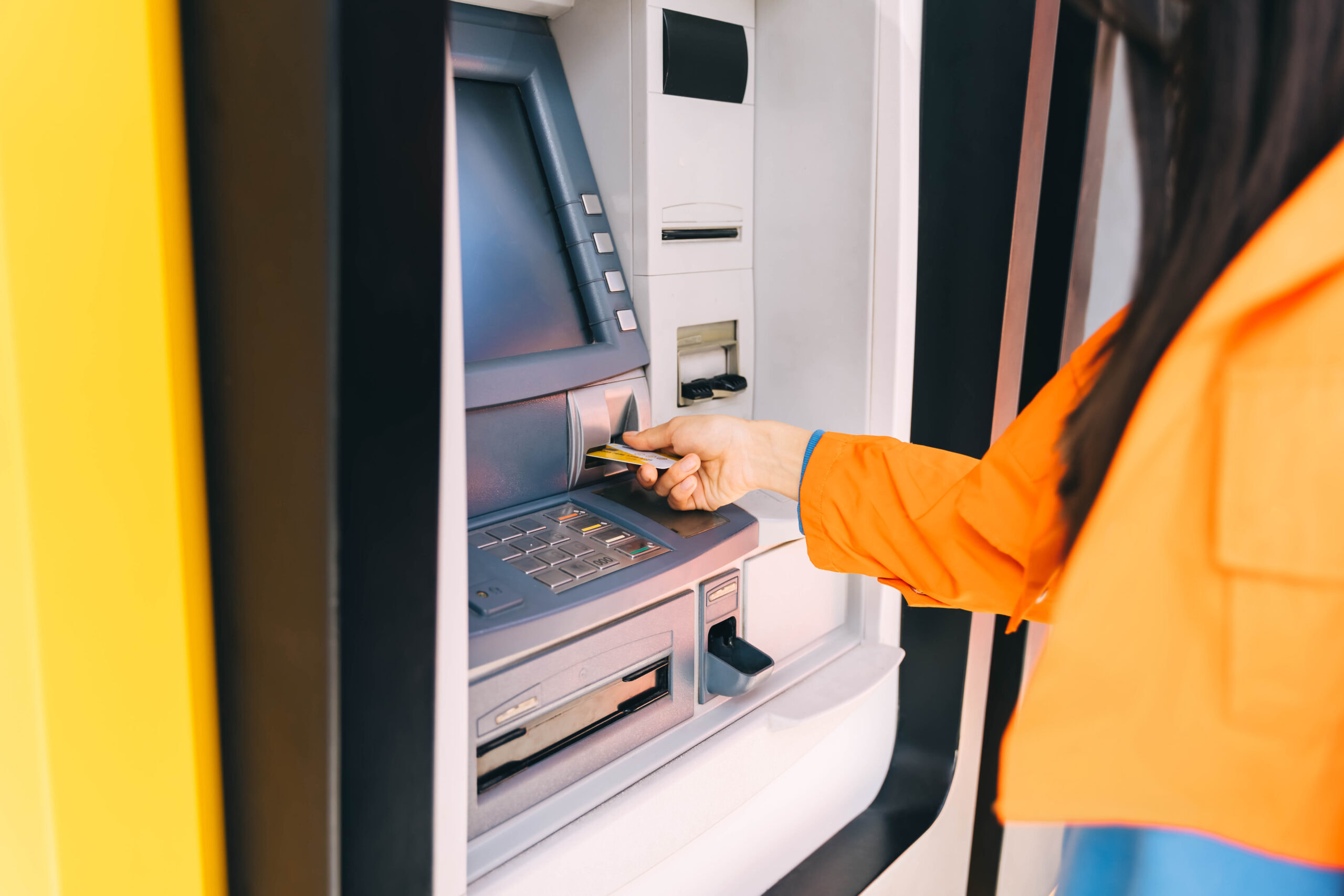Have you had a checking or savings account closed due to overdrafts or unpaid fees? If so, you might not qualify for a new bank account — at least not a traditional bank account. However, a second-chance bank accountcould help you get back into banking and rebuild your banking record.
Learn more about what second-chance banking is, how it works, and which banks offer second-chance bank accounts. We'll also dig into the pros and cons of second-chance banking to help you decide if a second-chance bank account is right for you.
What is second-chance banking?
Second-chance banking, sometimes called bad-credit banking, is the general term for bank accounts designed to help people who have had trouble managing bank accounts in the past. For example, if you've had bank accounts closed due to overdrafts, unpaid fees, or other mismanagement, you might not qualify to open a traditional checking or savings account. Second-chance banking allows you to rebuild your banking history over time until you can qualify for traditional accounts.
Second-chance accounts typically come with higher fees and more restrictions than traditional accounts. These fees and restrictions may be reduced over time. After a year or two of banking without overdrafts or unpaid fees, you might qualify for a traditional account with lower fees and better terms.
How does second-chance banking work?
Financial institutions (like banks and credit unions) and fintech (financial technology) companies offer second-chance banking to help promote financial inclusion, particularly for those who have made mistakes in banking in the past.
Everyone deserves a second chance. And manypeople make financial missteps. After all, financial literacy is not taught in all schools, and many parents aren't in a position to teach their children how to manage money. So, it's quite common for young adults to make mistakes as they learn how financial systems like banking, debt, and credit scores work. Second-chance banking allows you to try again with the knowledge you've gained over the years.
When exploring your options and looking for these types of accounts, it's good to know exactly what you're looking for to aid in your search. Second-chance bank accounts are characterized by:
- No ChexSystems denial. ChexSystems is a reporting agency that maintains consumer banking history records. Rather than running your information through this system and using any negative marks to deny your application for the account (as is typically done with traditional banks), second-chance banks don't use this information to deny your account.
- Fewer features than traditional accounts. For example, you might not earn interest or have overdraft protection with a second-chance account.
- Higher fees than traditional accounts. You may need to pay monthly account management fees to keep your account open. However, these fees are typically manageable (usually under $10 per month).
- Opportunity to upgrade. After a period of responsible use (e.g., 6-12 months), you might qualify to upgrade to a standard checking or savings account.
How to open a second-chance bank account
Opening a second-chance bank account works similarly to opening a traditional account. You can visit a financial institution in person or online to enroll in a second-chance account. Some fintech companies also offer online enrollment for second-chance bank account enrollment.
Eligibility requirements for a second-chance bank account may include:
- Being at least 18 years old, although some banks serve younger customers, with guardian approval
- Being a legal U.S. resident
- Having a valid phone number
To apply for a second-chance bank account, you typically need to provide:
- A valid government-issued ID, like a passport or driver's license
- A Social Security number or tax ID number
- Basic personal info, like your phone number and address
- A small opening deposit, which varies by bank
Best second-chance banks
The following fintech companies and banks offer second-chance bank accounts for consumers with bad credit or poor banking histories.
Netspend Prepaid Cards and Debt Accounts
Netspend offers prepaid cards and debit accounts that serve as second-chance banking with:
- No ChexSystems or credit check1
- A low $5 per month fee2 for the debit account (the prepaid card does not have monthly fees3)
- Up to 6.00% Annual Percentage Yield (APY) with the Savings Account4
- Overdraft Protection5 with the Netspend® Debit Account
- No minimum balance to open a Savings Account4
- FDIC Insurance6 through its banking partners.
Banking services provided by Pathward®, National Association, Member FDIC.
Prepaid cards allow you to digitize your money, loading cash to the card for more convenient spending. This is also a valuable tool for parents who want to limit their children's spending without giving them cash.
Debit accounts work more like second-chance checking accounts, allowing you to store your money with an FDIC-insured banking partner. Then, you can easily access your money with a debit card while earning rewards for spending.
Chime
Chime offers second-chance bank accounts with:
- No ChexSystems or credit check
- No monthly fees
- A 2% APY on savings
- No overdraft fees
- No minimum balance requirements
- No international transaction fees
- FDIC insurance through its banking partners
Chime's second-chance bank account provides a debit card for easy access to your funds. Importantly, they don't offer joint accounts, so you cannot share account access with a partner.
Wells Fargo Clear Access Banking
Wells Fargo is a well-established bank with over 4,000 branches nationwide. Its Clear Access bank account offers:
- No ChexSystems or credit check
- A $25 opening deposit
- A $5 monthly fee (which may be waived if the primary account holder is under 24 or a military service member)
- Access to teens as young as 13 (with guardian supervision until 16)
- No overdraft fees
- No minimum daily balance requirements (after the opening deposit)
- FDIC insurance
- The opportunity to convert to a traditional account after one year of responsible usage
The Wells Fargo Clear Access bank account offers many of the same benefits as traditional accounts. However, it's worth noting that this account does not pay interest. So, if you want to earn interest on your savings in the future, you'll need to upgrade to a traditional account as soon as you qualify.
Bank of America Safe Balance Account
Bank of America was founded in 1904 and has around 3,700 branch locations across the United States. Its Safe Balance bank account offers:
- No ChexSystems or credit check
- A $25 opening deposit
- A $4.95 monthly fee in most states (which may be waived if the primary account holder is under 24 or the account balance exceeds $500)
- No overdraft fees
- No minimum daily balance requirements (after the opening deposit)
- Direct deposit
- FDIC insurance
Bank of America's Safe Balance bank accounts offer many of the same perks as their traditional accounts. Importantly, this account does not pay interest, so you would need to upgrade to a traditional interest-bearing account once your banking history has been rebuilt.
Hope Credit Union Easy Checking
Hope Credit Union offers an Easy Checking program as a second-chance banking or starter account for young adults without any credit history. This account includes:
- No ChexSystems or credit check
- A $25 opening deposit balance
- A minimum daily balance of $25
- A $9.95 monthly fee (which may be waived if the balance is over $200)
- Unlimited paperless transactions
- Automatic transfers/drafts
- An overdraft protection program
- FDIC insurance
Hope Credit Union is based in the South and primarily serves residents of Alabama, Arkansas, Louisiana, Mississippi, and Tennessee. However, Americans nationwide can access Hope's banking products by either working for a partner organization (many community groups, nonprofits, and churches qualify) or joining Hope's nonprofit, Hope Enterprise Corporation, by making a small donation.
Pros and cons of second-chance banking
The benefits of second-chance banking include:
- Easier approval. You can qualify for a second-chance account if you have a poor banking history or a low credit score.
- Access to basic banking services. You get essential tools like debit cards, online banking, and spending reports. This is a major improvement over trying to use cash.
- Repairing your banking reputation. Using the account responsibly can rebuild your banking history, helping you qualify for traditional accounts in the future.
- Improving financial management skills. Second-chance accounts allow you to practice using banking services responsibly.
The potential downsides of second-chance banking include:
- May have higher fees. Many of these accounts come with monthly maintenance fees.
- Limited features. You might not get access to perks like overdraft protection, paper checks, or rewards.
- They don't improve your credit score. While a second-chance account can improve your banking history, it does not affect your credit score. To improve your credit score, consider a secured credit card.
- Fewer bank options. Not all financial institutions offer second-chance accounts, so you may need to look a little harder to find banks for bad credit.
Open your second-chance bank account today
Second-chance banking can help you rebuild your banking history so you can eventually unlock traditional checking and savings accounts with full benefits, like better APYs, lower fees, and rewards points. No matter what your banking records or credit scores look like today, opening a second-chance account along with responsible practices could set you back on the path toward a brighter financial future!



